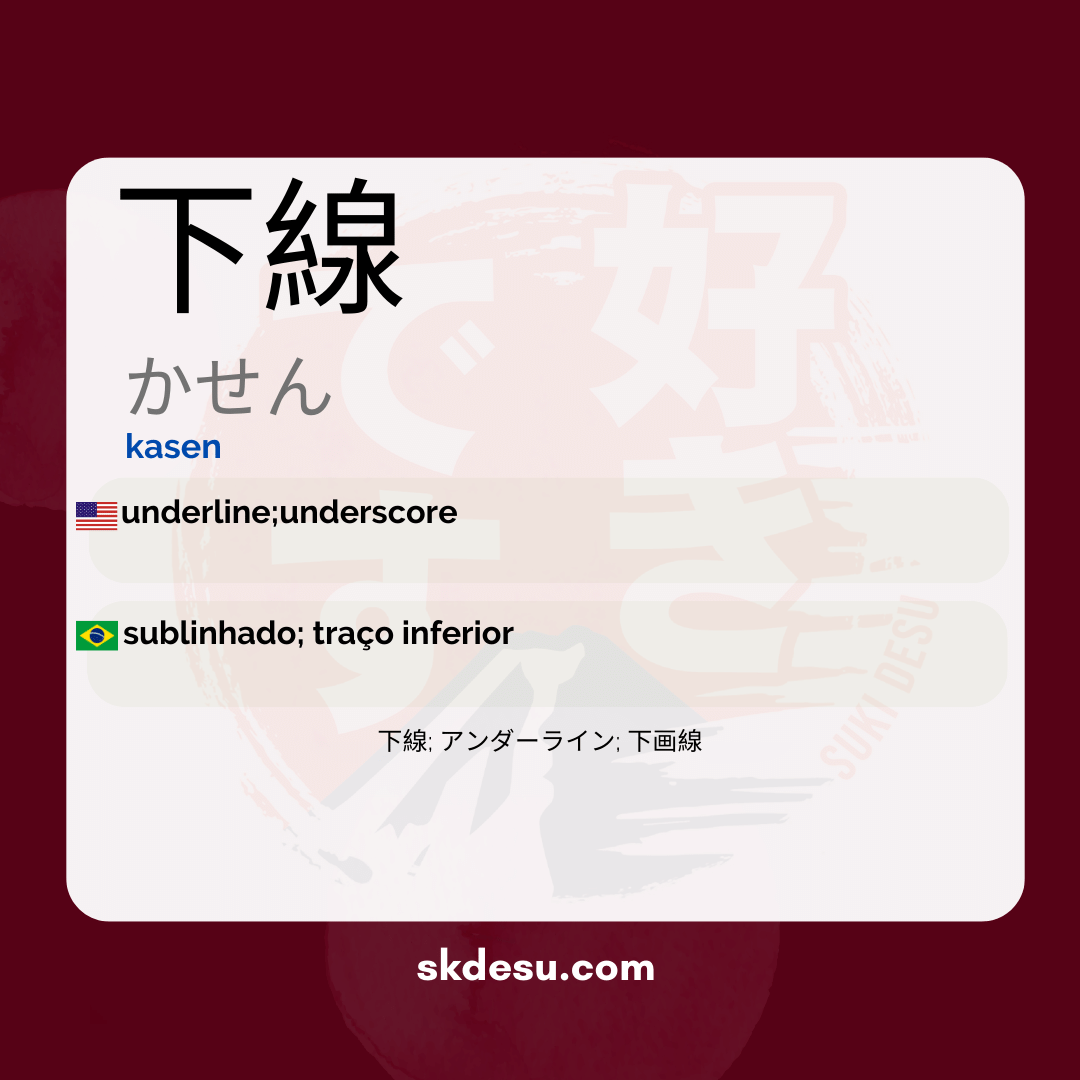Translation and Meaning of: 下線 - kasen
If you are studying Japanese or are curious about the language, you may have come across the word 下線[かせん]. But what does it mean exactly? In this article, we will explore its meaning, origin, translation, and use in everyday Japanese. Additionally, we will understand how this word is culturally perceived and how it appears in different contexts. If you want to learn Japanese for real, Suki Nihongo is the best dictionary to help you on this journey.
The meaning and translation of 下線 [かせん]
The word 下線[かせん] is composed of the kanji 下 (below) and 線 (line), forming the literal meaning of "lower line" or "underline." In English, it can be translated as "bottom line" or, more commonly, "underline." This word is often used in contexts of writing and text editing, whether in books, digital documents, or even handwritten notes.
In Japan, the use of 下線 is quite common in educational materials and formal texts to highlight important information. If you have ever seen a Japanese textbook, you may have noticed that key words or relevant phrases often appear underlined. This technique aids in memorization and organization of content.
The origin and the writing of 下線 [かせん]
The etymology of 下線 is quite straightforward, as it comes from the combination of two well-known kanjis. The first, 下, represents something that is below or in a lower position. The second, 線, means line or stroke. Together, they form a word that describes a marking made below a text.
It is worth noting that, although 下線 is the most common way to write this word, it can also appear in katakana (カセン) in more informal or technical contexts, especially in digital interfaces. However, the kanji version is still the most used in daily life.
How 下線[かせん] is used in everyday Japanese
In Japan, underlining is an important visual tool, both in printed and digital texts. Students often use 下線 to mark essential parts of their notebooks, while teachers use it to draw attention in tests and teaching materials. In corporate environments, official documents may also contain underlined sections to facilitate quick reading.
In addition, on digital platforms, such as blogs and social media, underlining can be used to indicate links or emphasize certain words. Although bold and italics are more common in some contexts, 下線 still maintains its place as a useful and recognizable resource.
Vocabulary
Expand your vocabulary with related words:
Synonyms and similar words
- 下線 (Kasen) - Underline
- アンダーライン (Andārain) - Underline
- 下画線 (Kagasen) - The line below (usually used in technical writing contexts)
Related words
Romaji: kasen
Kana: かせん
Type: noun
L: jlpt-n2
Translation / Meaning: underlined; lower trace
Meaning in English: underline;underscore
Definition: 1. Being below the line. In particular, to indicate a text or part of a text, such as a book, by drawing it with a line.
Quick Access
- Vocabulary
- Writing
- Sentences
How to Write in Japanese - (下線) kasen
See below a step-by-step guide on how to write the word by hand in Japanese. (下線) kasen:
Example Sentences - (下線) kasen
See below some example sentences:
Kasen wo hiite kudasai
Please underline.
Please draw the underline.
- 下線 - 「アンダーライン」
- を - particle that indicates the direct object of the action.
- 引いて - verb form of the verb "hiku," which means "to draw" or "to trace."
- ください - the polite form of the verb "kudasai," which means "please."
Other Words of this Type: noun
See other words from our dictionary that are also: noun

